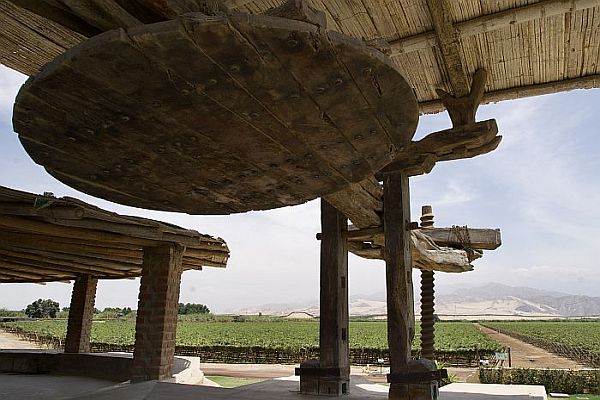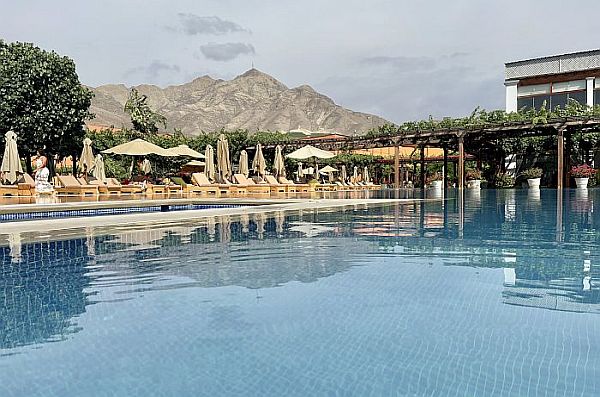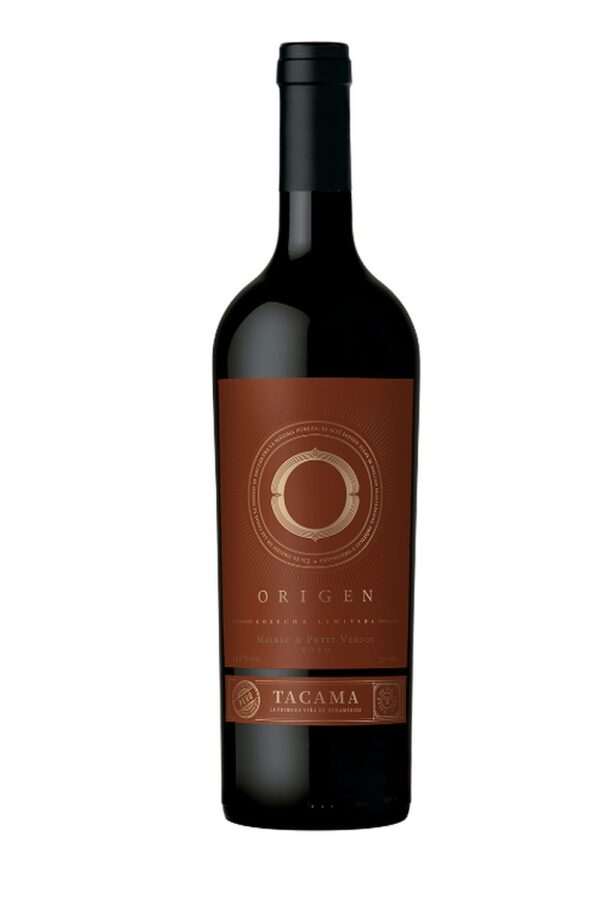If you ask a casual wine drinker where they produce that beverage in South America, you’ll likely just get “Argentina and Chile” as an answer, or possibly Uruguay too if they’ve traveled to the region. But you won’t get many people talking about wine from Peru.

If the question were framed as which drinks come from Peru, the most likely answers will be coca tea, Inca Cola, and pisco. We’ve written about pisco on here before, including about the differences in versions from the two countries that make it, but just as wine from Chile can come from the same areas that produce pisco, the same is true for wine from Peru. You just don’t hear much about it.
We thought we’d spread the word a little with two recent articles. First, we ran a tour story on the wine region of Peru, plus we reviewed a Peruvian wine lodge you can stay in that has winery tours and tastings. More on both in a minute.
The Peru Wine Industry
Just as in Mexico, Peru’s wine industry has been a start-and-stop affair, thanks to the whims of the Spaniards across the ocean. When Spain started conquering the Americas, the conquistadors and the clergy that followed brought vines from Europe to Peru in the 1540s and started growing grapes to turn into wine. This was partly for religious purposes (communion during mass) and partly to keep the troops happy.
There was a long productive run of wine from Peru before the Spanish rulers decided that this expansion was cutting into the home industry’s sales and they slapped a huge tax on exports of local wine in the 1700s, killing the industry just as it was gaining traction. Even back then, trade-killing tariffs that protected local producers—in this case the Spanish wine industry—were a thing.

At that point, many of Mexico’s wine vineyards transitioned to making brandy. Peru’s winemakers started turning all those grapes into pisco and eventually everyone developed a taste for that instead. While Chile’s and then Mexico’s wine industries recovered steadily, Peru’s never really did, treating wine almost as a hobby byproduct of pisco production.
I remember ordering wine a few times on my first trip to Peru in the early ’00s and saying, “Not bad” more often than any other phrase. There was a lot of jug wine and then two brands in bottles that are still the major players: Tacama and Santiago Queirolo. Neither seemed to get high praise from anyone in the country. Luxury tourists seemed to dismiss the whites, try the reds once, then order something from Argentina or Chile the next time around.
According to some wine watchers though, Peru is waking up from its slumber and starting to take advantage of its unique grape varieties and conditions. Instead of just producing the same wines you find the world over, a few innovators like Bodega Murga are combining grapes that have graced the dry slopes for centuries and the winemakers have adapted to produce distinctive blends that are surprising instead of routine.
The Wine Scene of Ica
Our correspondent who is based in Peru, Heather Jasper, recently spent some time in the Ica region of southern Peru, the epicenter of pisco production but now a growing wine grape area as well. There have long been pisco distillery tours and tastings, but when we’re talking about a clear, unaged spirit with a high alcohol content and an acquired taste, the foreign crowds haven’t shown much interest in driving hours from Lima for a tasting experience.
The opportunity to tour vineyards and do winery tastings could push the few foreign visitors with money who come to this area to stick around a little longer. The Ica region already gets a steady stream of long weekend domestic travelers from the capital and a trickle of curious foreigners thanks to its location near the mysterious Nazca Lines and the Ballestas Islands teeming with wildlife. Add a wine lodge and some tastings to the mix and there’s more of a reason for a multi-day vacation.
While there are a few wineries in other parts of Peru, this dry area around Ica has been the prime location for growing grapes since the 1500s and you can tour several wineries that do tours and tastings. Several local tour companies, including the one highlighted in the article linked below, can set up tours so you’re not winging it. The wine lodge we reviewed does their own as well.
Visiting Peru Wine Country

As we mentioned, not many foreign visitors make their way down through the desert to Peru’s main wine-producing area, but our correspondent did so we’ve got the scoop. There are only two luxury hotels we recommend in the area. The first is Hotel Paracas, a Marriott Luxury Collection property, which is the best base for exploring the Ballestas Islands. Then we just added a wine country option closer to the vines: Hotel Vinas Quierolo on the estate of the winery (and pisco maker) of the same name.
The latter is a better bet if you’ll be trying a fair bit of wine because Paracas is much further away. From near Ica you can also get a flight ticket to see the Nazca Lines from the air or follow in our correspondent’s footsteps and take part in a desert picnic looking out at the dunes. See the full story here: Peruvian Wine Tours in the Desert Near Ica.
Want to learn more and explore the options for wine in Peru in depth, including what to order in Lima at dinner? The best article I’ve seen about the current state of Peruvian wine is from a South America expert travel writer who has contributed to Luxury Latin America in the past: Nicholas Gill. You can see his detailed rundown here with recommendations on specific bottles to look for.

Article by Timothy
Timothy Scott is the founder and editor of Luxury Latin America and has been covering the region as a travel journalist since the mid-2000s. He has visited each country we cover multiple times and is based in a UNESCO World Heritage city in central Mexico, where he owns a home. See contact information here.

